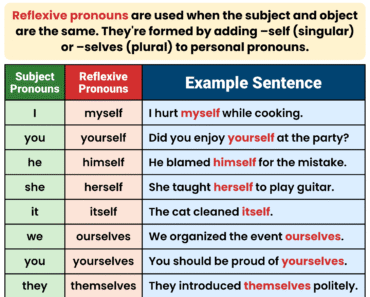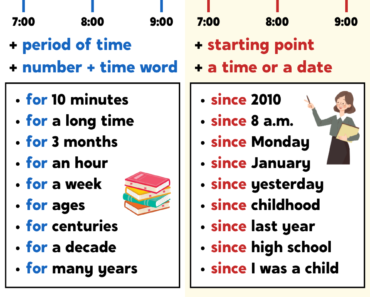
The present participle is an essential part of English grammar. It is the -ing form of a verb created by adding -ing to the base form, and it is used to form continuous tenses, participle clauses, and adjectives. Although it looks the same as a gerund, it has different functions in sentences and must be used correctly.
In this article, you will find the definition, examples, grammar rules for forming the present participle, common uses, a comparison with the gerund, and a list of verbs with their present participle forms.
What Is the Present Participle?
The present participle is the -ing form of a verb used to show an ongoing action or to describe something happening at the same time as another action. In English grammar, it functions as part of a verb phrase to form continuous tenses, or it can act as an adjective or be used in participle clauses.
It is important to note that while the present participle looks identical to the gerund, its role in the sentence is different: the present participle does not function as a noun.
Examples of present participles:
- running
- eating
- studying
- going
- writing
How to Form the Present Participle
Forming the present participle in English is usually straightforward: you create it by adding -ing to the base form of the verb. However, there are important spelling rules and exceptions to keep in mind so you can form it correctly in every situation.
1. Most Verbs
For most verbs, you simply add -ing to the base form without making any other changes. This is the most common pattern.
Examples:
- work → working
- play → playing
- read → reading
2. Verbs Ending in -e
If the base form of the verb ends with a silent -e, you need to remove the -e before adding -ing. This helps the word keep a natural spelling and pronunciation.
Examples:
- make → making
- write → writing
- drive → driving
Some verbs ending in -ee do not drop the -e:
- see → seeing
- agree → agreeing
3. Verbs Ending in -ie
When the verb ends in -ie, you change the ending by replacing -ie with -y, and then you add -ing. This prevents awkward spelling combinations.
Examples:
- lie → lying
- die → dying
4. One-Syllable Verbs Ending in Vowel + Consonant
If a one-syllable verb ends with a single vowel followed by a single consonant, you double the final consonant before adding -ing. This keeps the correct pronunciation of the base verb.
Examples:
- run → running
- sit → sitting
- get → getting
Do not double the final consonant if it is w, x, or y:
- fix → fixing
- mix → mixing
- enjoy → enjoying
5. Verbs Ending in -c
If a verb ends in -c, you add -k before adding -ing to maintain the correct pronunciation.
Examples:
- picnic → picnicking
- panic → panicking
Uses of the Present Participle
The present participle has multiple important uses in English grammar. Below are the main functions explained in detail.
1. Continuous (Progressive) Verb Tenses
The present participle is used with the auxiliary verb “be” to form continuous tenses.
Present Continuous
Subject + am/is/are + present participle
- She is reading a book.
Past Continuous
Subject + was/were + present participle
- They were playing outside.
Future Continuous
Subject + will be + present participle
- I will be working tomorrow.
Present Perfect Continuous
Subject + have/has been + present participle
- He has been studying all day.
Past Perfect Continuous
Subject + had been + present participle
- She had been waiting for hours.
Future Perfect Continuous
Subject + will have been + present participle
- By next year, I will have been living here for a decade.
2. Participle Clauses
Present participle clauses are used to connect ideas in a sentence in a concise way. They can show actions happening at the same time, explain cause and effect, or introduce contrast between ideas.
Examples:
- Walking down the street, she saw an old friend.
- Feeling hungry, he went to the kitchen.
- Knowing she was late, she ran to catch the bus.
3. As an Adjective
Present participles can describe the qualities of nouns. This use is very common to talk about feelings or characteristics.
Examples:
- an exciting movie
- a boring lesson
- a frightening experience
4. After Verbs of Perception
Present participles can be used after verbs such as see, hear, watch, notice, feel to show an action in progress.
Examples:
- I saw him crossing the street.
- She heard the baby crying.
- We watched the fireworks exploding in the sky.
5. After Verbs of Movement
Present participles are used after verbs like go, come, arrive to describe activity.
Examples:
- They went swimming.
- She came running into the room.
- He left singing happily.
6. With “Spend” and “Waste”
Used to talk about time or money spent doing something.
Examples:
- He spends hours playing video games.
- She wasted time complaining.
7. In Reduced Relative Clauses
Present participles can replace relative clauses to make sentences shorter.
Examples:
- The man standing over there is my uncle. (who is standing)
- The people waiting outside are customers. (who are waiting)
Present Participle vs. Gerund
Although both forms end in -ing, they serve different purposes in a sentence.
Present Participle: Acts as part of a verb phrase (to form continuous tenses), or functions as an adjective or in a participle clause describing another action.
Gerund: Functions as a noun and can be the subject or object of a sentence.
Examples:
- She is swimming in the pool. (present participle as part of the verb phrase)
- Swimming is good exercise. (gerund functioning as the subject)
List of Common Verbs and Their Present Participles
| Base Verb | Present Participle | Base Verb | Present Participle |
|---|---|---|---|
| read | reading | talk | talking |
| make | making | watch | watching |
| go | going | sleep | sleeping |
| swim | swimming | build | building |
| write | writing | listen | listening |
| run | running | speak | speaking |
| lie | lying | buy | buying |
| drive | driving | feel | feeling |
| sit | sitting | dance | dancing |
| play | playing | cook | cooking |
Conclusion
The present participle is more than just the -ing form of a verb. It is a key structure for forming continuous tenses, creating participle clauses that add detail, and describing actions that happen at the same time as others. Unlike gerunds, which function as nouns, present participles always act as part of a verb phrase or as an adjective.
By understanding its different uses and spelling rules, you can avoid common mistakes and write more precise, clear sentences. Reviewing real examples and practicing in context will help you see how the present participle connects ideas and gives your English a natural flow.







But can’t the present participle be used in the construction of present simple sentences that talk about routines or general habits as well? For example: I enjoy walking in the mountains. I prefer eating fish to other meat.